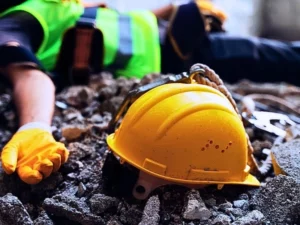Workplace accidents are not limited to emergency response crews or to the manufacturing sector. Desk jobs and professional endeavors carry risk as well. White collar jobs fall into two general categories: managerial and professional occupations, and technical, sales and administrative support. People in Illinois may assume that these office-type positions do not generate much workplace injury, but in fact a work injury lawyer in Chicago could quote many examples of people who have suffered debilitating bodily damage while in their cubicle or at their console.

Office-related injury
Sitting, typing and talking on the phone for hours at a stretch can make an office worker vulnerable to a host of injuries. Top complaints are back, neck and shoulder strain, impaired vision, and discomfort or decreased function of wrists and fingers. Poor ventilation can create a hazardous environment for people who work indoors all day. According to the Centers for Disease Control and Prevention, the number one source of workplace injury in the office is falls. The CDC lists the following as conditions that may lead to an injurious fall:
- Electrical wires loose on the floor, or objects left in pathways
- Overreaching while bending
- Substituting a chair for a ladder or stepstool
- Poor lighting
- Wet flooring
Back strain caused by lifting heavy objects is another common injury in the office. Backs can suffer, as well, from non-ergonomic furniture that fails to offer a seated worker the proper support.
RSI can occur with repetitive finger motions and the contraction of the forearm and wrist muscles for extended periods of time. An office worker suffering from RSI can experience pain, swelling, redness and tingling in his or her neck, shoulders, arms and hands. The condition is sometimes treated with surgery. A work injury lawyer in Chicago may see many cases in which affected workers are unable to continue in their jobs, and must develop new skills to hold employment.
Airline pilots and workplace injury
Airline pilots make up a distinct segment of white collar workers in that they are physically exposed to much of the same working environment as other, blue collar workers. Slips and falls lead to injury, on the tarmac as well as within the airport. Pilots risk being struck by a refueling tank or a luggage or catering vehicle in the preparation area. Jet engine decibel levels can lead to both temporary and permanent hearing loss. According to the Flight Safety Foundation, pilots suffer a complex range of injuries at the workplace. Pilots are considered travelling employees whose workplaces shift from location to location, and even airport to airport. The constant change of working conditions keeps the potential for bodily harm high for airline professionals.
Risks for architects and engineers
Architects and engineers often divide their work time between the office and the construction site. They are susceptible to both the ergonomic challenges of a desk job and the exposure to injury inherent in an open construction area. Common mishaps include falls, lacerations, broken bones and bruises from flying debris, and injuries from malfunctioning machinery. A collapsing structure can result in a crushing injury. An architect or engineer may be electrocuted at a construction site. A building or renovation site may harbor toxic mold that can cause serious and long-term respiratory damage. An architect or project manager is exposed to risk of injury from a vehicle accident when travelling between sites.
Occupational stress
The National Institute for Occupational Safety and Health states that difficulties at work may be more closely tied to complaints about worker health than other life stressors, including family issues and money concerns. The NIOSH draws a distinction between challenging work environment, which ideally inspires workers to perform better, and a stressful work environment, which demands more of a worker than may be delivered. The organization states there is a “growing concern that stressful working conditions interfere with safe work practices and set the stage for injuries at work.” White collar workers such as stockbrokers, real estate agents and medical professionals may be particularly vulnerable to stress-induced disease or injury. The burden of proof is on the employee to prove a stress-related injury or disease originated from an unhealthy work environment. Physical complaints arising from emotional stress include headaches, digestive disorders and hypertension.
Broadened definitions of workplace and injury
The phrase, “work-related,” is expanding its scope to include company events that may not strictly conform to traditional definitions. For example, an employee who suffers an injury while playing on a company-sponsored sports team may be eligible for benefits. Another area under consideration addresses employees who have witnessed a traumatic event while at work. Both natural and human-generated disasters can result in post-traumatic stress disorder. The Centers from Disease Control and Prevention state that exposure to a traumatic event can have long-lasting and debilitating impact on health and performance. Although PTSD is more typically associated with emergency responders and military personnel, it can affect anyone who experiences the trauma of being present at a disaster. Physical symptoms may develop and persist months after the original incident, including chronic pain, stomach distress, headache, lower back pain and tightness in the chest.
Legal advice is available
Every work environment harbors the potential to cause injury to the people who work there. Sedentary occupations such as computer software development and administrative support pose risks specific to indoor spaces, such as breathing problems due to inadequate circulation, impact injuries from tripping or falling, and physical distress from repetitive activities. If you are suffering from a workplace-related disease or injury, a work injury lawyer in Chicago may be able to help you get the compensation you need.







